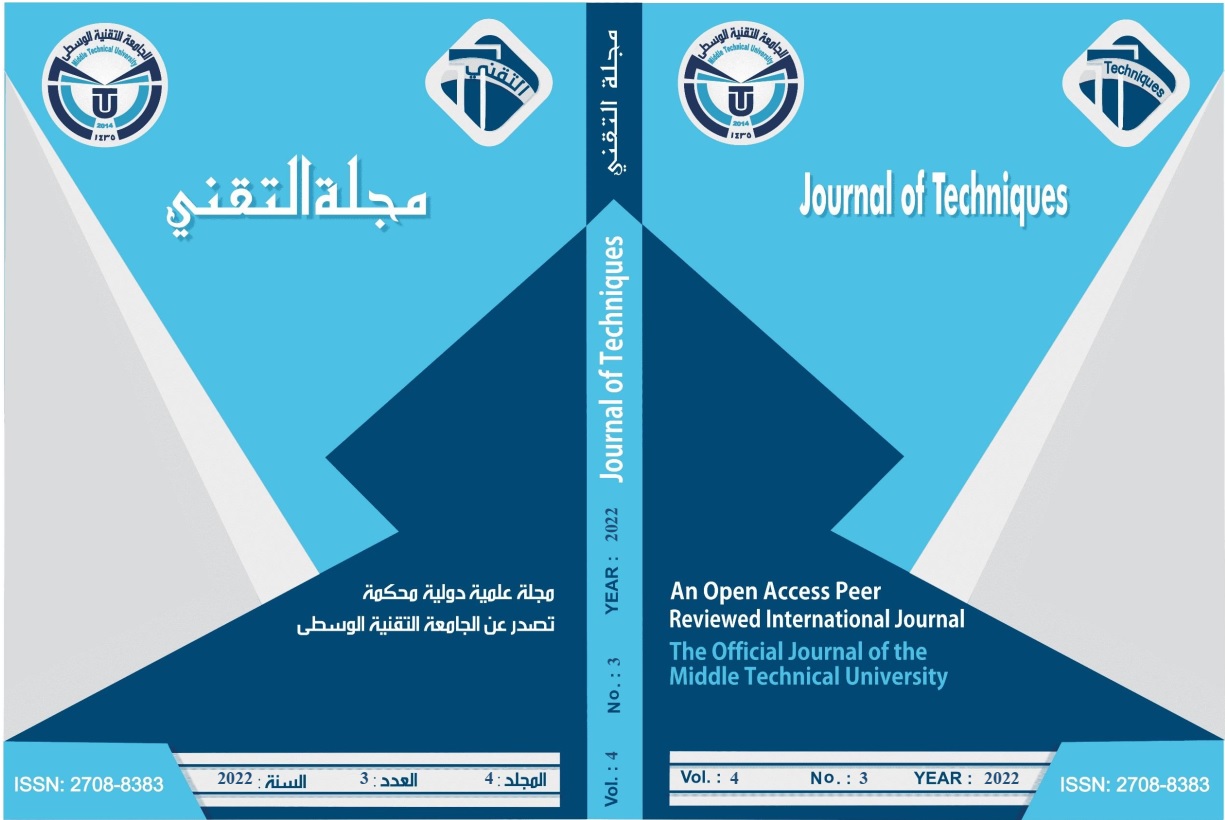Biofilm Formation of Staphylococcus Aureus in Multiple Sclerosis Patients and its Essential Role in the Pathogenicity of the Disease
DOI:
https://doi.org/10.51173/jt.v4i3.511Keywords:
Multiple sclerosis Staphylococcus aureus, Biofilm formationAbstract
Background: Multiple sclerosis (MS) is a chronic inflammatory, autoimmune neurological disease of the central nervous system (CNS). One of the most important factors that lead to increased bacterial resistance to an antibacterial agent and also increase the severity of multiple sclerosis, is the capability of producing enterotoxins and biofilm.
Aim: To investigate the biofilm-forming Staphylococcus aureus and its correlation with multiple sclerosis severity.
Methods: one hundred nasal swab segments from "multiple" "sclerosis" patients and 100 from controls. Staphylococcus aureus was cultured on blood agar, nutrient agar, mannitol salt agar, biochemical tests, and biofilm assay tests were done.
Results: A case-control study including (81%) of MS patients were colonized with Staphylococcus aureus in the nasal cavity while only (12%) were colonized in controls, By using the crystal violet microtiter plate method, all Staphylococcus aureus isolates in multiple sclerosis patients can produce biofilm depending on cutoff point (0.171) that measured by ELISA technique, out of 81% isolates from multiple sclerosis patients there were 97.5%, strong biofilm producers, while only 2.5% of isolates were weak biofilm producers.
Conclusions: All isolates produce biofilm in high density correlated with increased antibiotic resistance of isolates and increase disease severity.
Downloads
References
Goldenberg, M. M. (2012). Multiple sclerosis review. P&T: a peer-reviewed journal for formulary management 37 (3), 175–184.
Ghasemi, N., Razavi, S., & Nikzad, E. (2017). Multiple sclerosis: pathogenesis, symptoms, diagnoses and cell-based therapy. Cell Journal (Yakhteh), 19(1), 1.
Zycinska, K., Wardyn, K. A., Zielonka, T. M., Demkow, U., & Traburzynski, M. S. (2008). Chronic crusting, nasal carriage of Staphylococcus aureus and relapse rate in pulmonary Wegener’s granulomatosis. J Physiol Pharmacol, 59(Suppl 6), 825-831.
Chowdhary, V. R., Tilahun, A. Y., Clark, C. R., Grande, J. P., & Rajagopalan, G. (2012). Chronic exposure to staphylococcal superantigen elicits a systemic inflammatory disease mimicking lupus. The Journal of Immunology, 189(4), 2054-2062.
Grace, D., & Fetsch, A. (2018). Staphylococcus aureus—A foodborne pathogen: Epidemiology, detection, characterization, prevention, and control: An overview. Staphylococcus aureus, 3-10.
Greenwood, D., & O’grady, F. (1972). Scanning electron microscopy of Staphylococcus aureus exposed to some common anti-staphylococcal agents. Microbiology, 70(2), 263-270.
Foster, T. (1996). Chapter 12: staphylococcus. Medical Microbiology. 4th edition. Galveston (TX): University of Texas Medical Branch at Galveston, Galveston, Texas, 199-205.
Touhami, A., Jericho, M. H., & Beveridge, T. J. (2004). Atomic force microscopy of cell growth and division in Staphylococcus aureus. Journal of bacteriology, 186(11), 3286-3295.
Liu, G. Y., Essex, A., Buchanan, J. T., Datta, V., Hoffman, H. M., Bastian, J. F., ... & Nizet, V. (2005). Staphylococcus aureus golden pigment impairs neutrophil killing and promotes virulence through its antioxidant activity. The Journal of experimental medicine, 202(2), 209-215.
Gowrishankar, S., Kamaladevi, A., Balamurugan, K., & Pandian, S. K. (2016). In vitro and in vivo biofilm characterization of methicillin-resistant Staphylococcus aureus from patients associated with pharyngitis infection. BioMed research international, 2016.
Pakbaz, Z., Sahraian, M. A., Sabzi, S., Mahmoodi, M., & Pourmand, M. R. (2017). Prevalence of sea, seb, sec, sed, and tsst-1 genes of Staphylococcus aureus in nasal carriage and their association with multiple sclerosis. Germs, 7(4), 171.
Arciola, C. R., Campoccia, D., Ravaioli, S., & Montanaro, L. (2015). Polysaccharide intercellular adhesin in biofilm: structural and regulatory aspects. Frontiers in cellular and infection microbiology, 5, 7.
Belbase, A., Pant, N. D., Nepal, K., Neupane, B., Baidhya, R., Baidya, R., & Lekhak, B. (2017). Antibiotic resistance and biofilm production among the strains of Staphylococcus aureus isolated from pus/wound swab samples in a tertiary care hospital in Nepal. Annals of clinical microbiology and antimicrobials, 16(1), 1-5.
Ismet, M. M., Nizami, D., Guuml; lay, G. D., Takn, D., & Esra, O. (2011). The frequency of slime, adhesin and methicillin resistance genes among staphylococci isolated from nasal samples of multiple sclerosis patients. African Journal of Microbiology Research, 5(30), 5453-5460.
Moghadam, S. O., Pourmand, M. R., & Aminharati, F. (2014). Biofilm formation and antimicrobial resistance in methicillin-resistant Staphylococcus aureus isolated from burn patients, Iran. The Journal of Infection in Developing Countries, 8(12), 1511-1517.
Mulvey, M. R., Doupe, M., Prout, M., Leong, C., Hizon, R., Grossberndt, A., ... & Namaka, M. (2011). Staphylococcus aureus harbouring Enterotoxin A as a possible risk factor for multiple sclerosis exacerbations. Multiple Sclerosis Journal, 17(4), 397-403.
Slany, M., Oppelt, J., & Cincarova, L. (2017). Formation of Staphylococcus aureus biofilm in the presence of sublethal concentrations of disinfectants studied via a transcriptomic analysis using transcriptome sequencing (RNA-seq). Applied and Environmental Microbiology, 83(24), e01643-17.

Downloads
Published
How to Cite
Issue
Section
License
Copyright (c) 2022 Suhad Hassan Aubaid, Ekhlas Saddam Falih, Suhaib khalid Ibrahim

This work is licensed under a Creative Commons Attribution 4.0 International License.
















